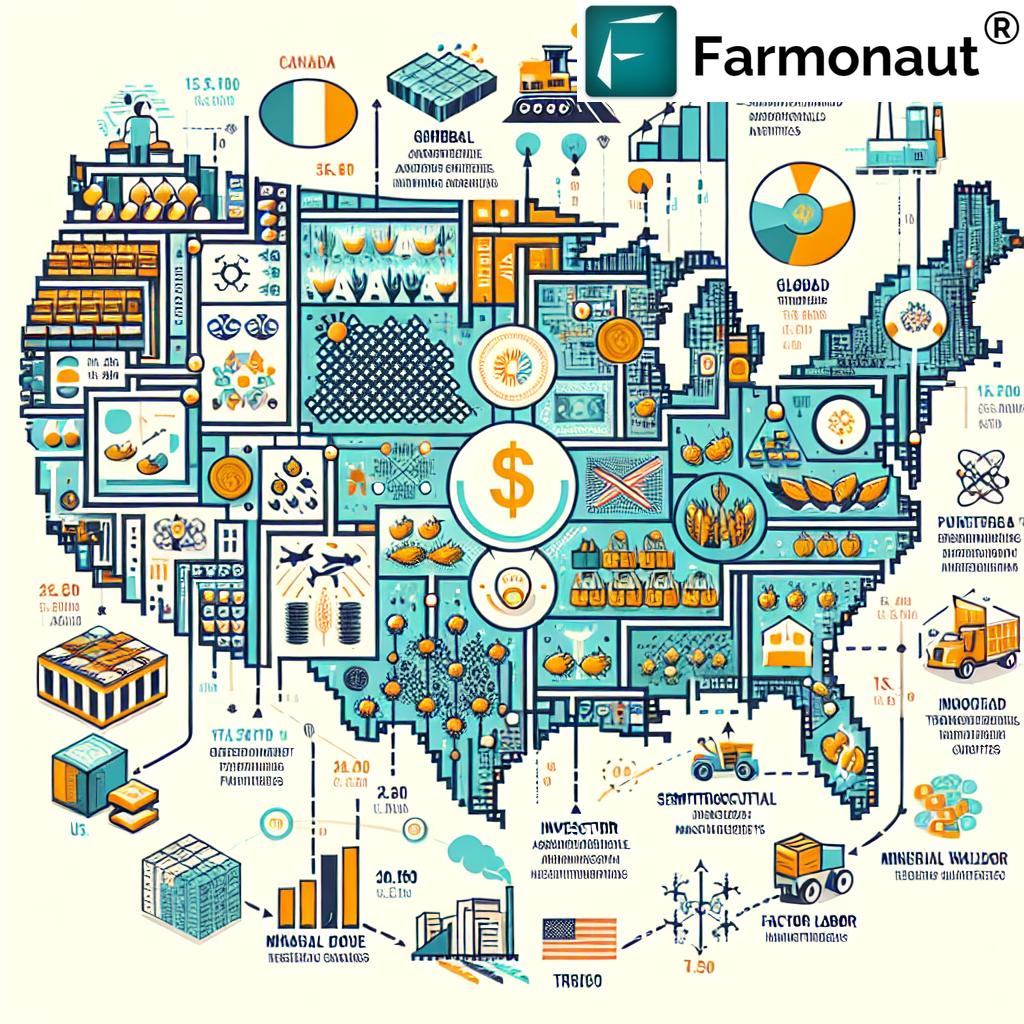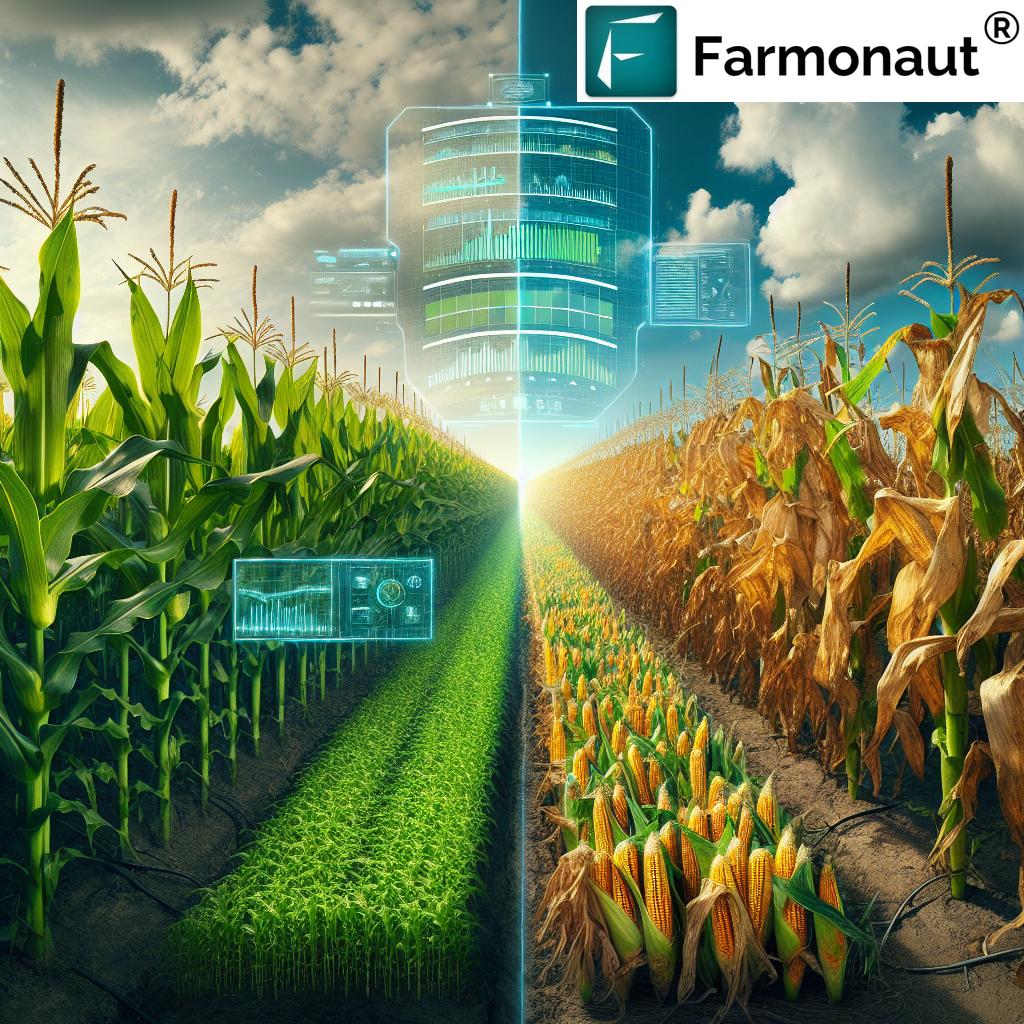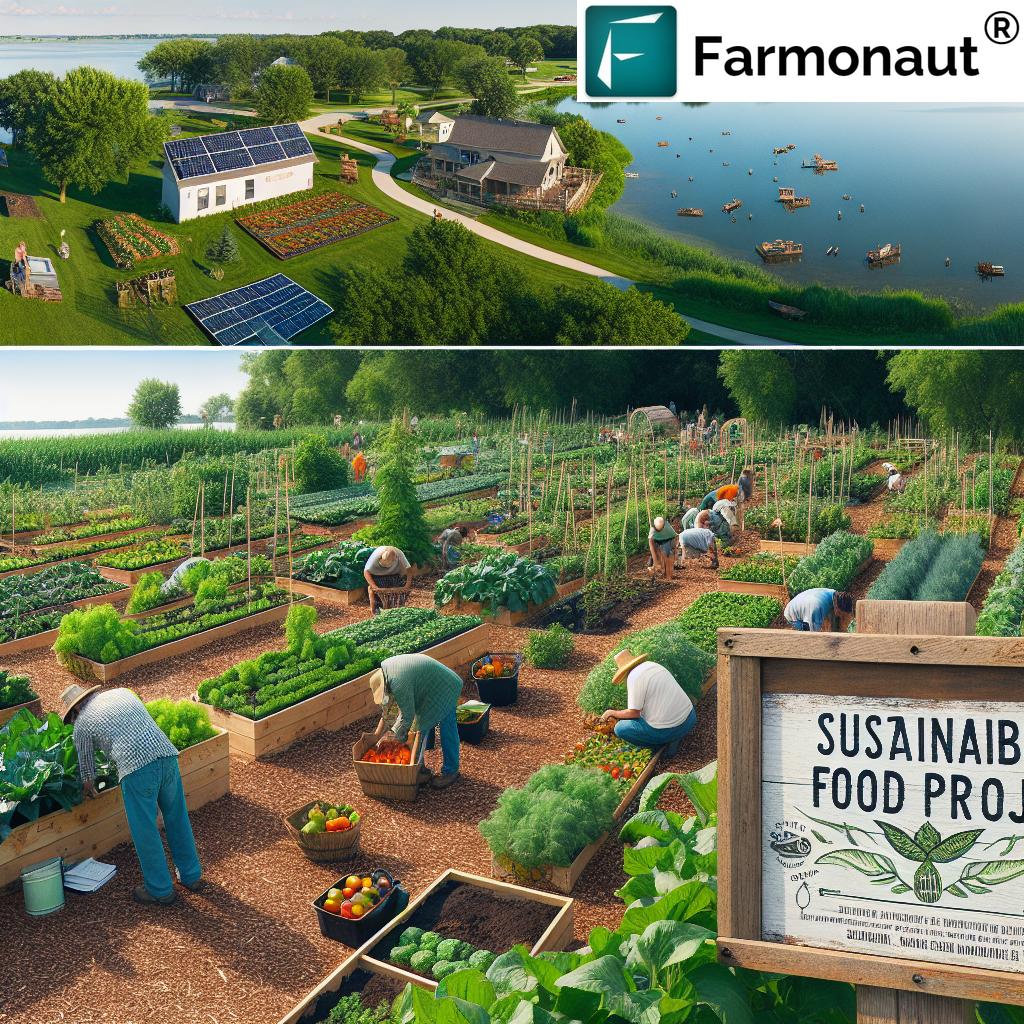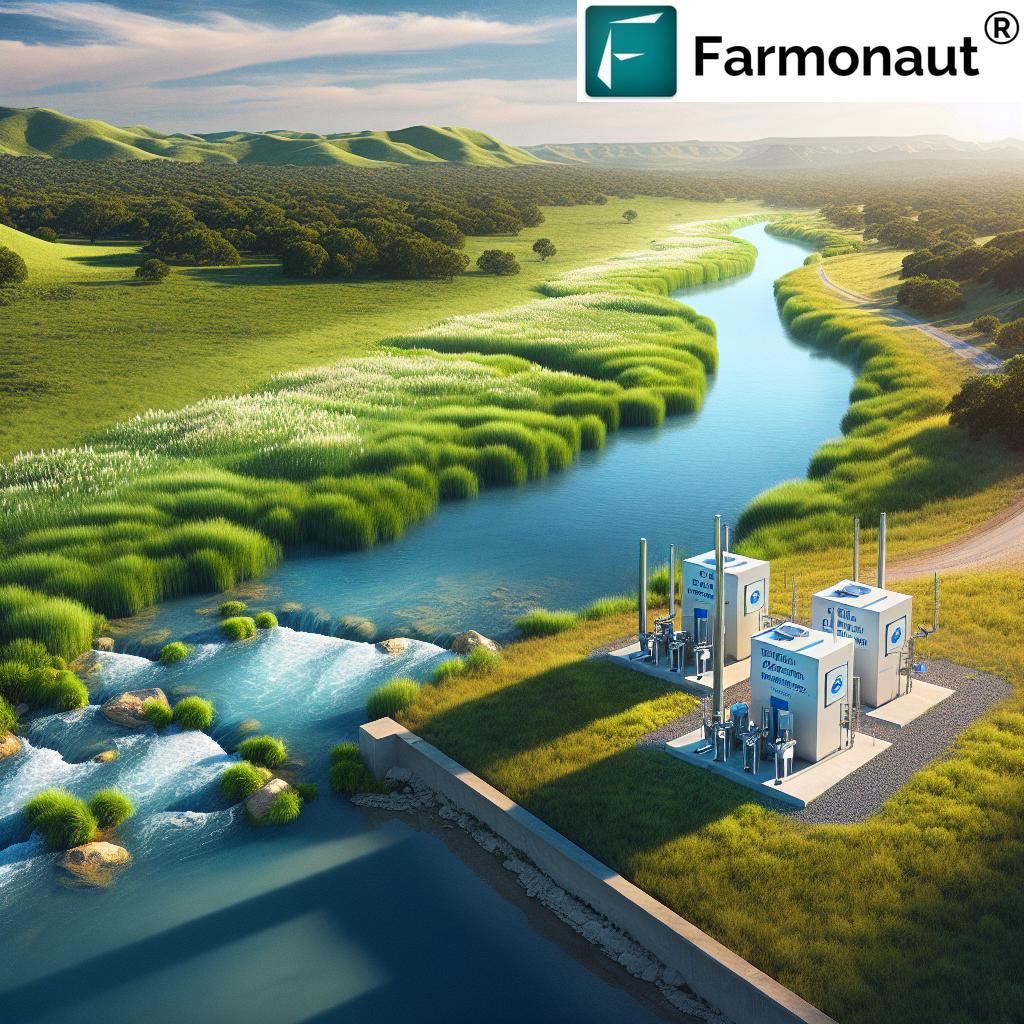Boosting Sustainable Agriculture: How Washington’s Grassland CRP Enhances Soil Health and Biodiversity
“Washington’s Grassland CRP achieved record-high enrollment in 2022, boosting sustainable agriculture practices across the state.”
In the ever-evolving landscape of agriculture, we find ourselves at a crucial juncture where sustainable practices are not just desirable but essential. The Grassland Conservation Reserve Program (CRP) in Washington state has emerged as a beacon of hope, revolutionizing the way we approach agriculture and land management. This innovative USDA conservation initiative is not only enhancing soil health and biodiversity but also offering producers and landowners a unique opportunity to maintain their grazing and haying practices while contributing to environmental stewardship.
Understanding the Grassland Conservation Program
The Grassland CRP is a pivotal component of the USDA’s broader Conservation Reserve Program. It’s designed to protect grasslands, rangelands, and pastures while maintaining the land’s suitability for grazing. By enrolling in this program, landowners commit to conserving vulnerable lands instead of turning them over to intensive crop production.
- Preserves native grasslands
- Supports sustainable grazing practices
- Enhances wildlife habitat
- Improves water quality
- Reduces soil erosion
The program’s success in Washington is a testament to its effectiveness and appeal among farmers and ranchers who recognize the long-term benefits of sustainable land management.
The Impact on Soil Health
One of the most significant benefits of the Grassland CRP is its positive impact on soil health. By promoting practices that maintain permanent grass cover, the program helps to:
- Increase organic matter in the soil
- Improve soil structure and water retention
- Enhance nutrient cycling
- Reduce soil compaction
These improvements in soil health are crucial for long-term agricultural sustainability and productivity. Healthy soils are more resilient to climate stresses and can support higher yields with fewer inputs, making them a cornerstone of sustainable agriculture practices.

Biodiversity: A Key Beneficiary
The Grassland CRP’s impact on biodiversity cannot be overstated. By preserving native grasslands and promoting diverse plant communities, the program creates habitats that support a wide range of wildlife species. This increase in biodiversity brings numerous benefits:
- Enhanced pollinator populations
- Improved natural pest control
- Greater ecosystem resilience
- Conservation of endangered species
The rich tapestry of life supported by these grasslands contributes to the overall health and stability of the agricultural ecosystem, creating a more balanced and sustainable environment for farming.
Climate-Friendly Farming: A Win-Win Scenario
In the face of climate change, the Grassland CRP emerges as a powerful tool for mitigation and adaptation. By promoting practices that sequester carbon in the soil and reduce greenhouse gas emissions, the program aligns perfectly with climate-friendly farming objectives. Participants in the program contribute to:
- Carbon sequestration in soils and plant biomass
- Reduced emissions from agricultural activities
- Improved water management and drought resilience
- Enhanced landscape-level climate adaptation
These climate benefits not only contribute to global efforts to combat climate change but also help farmers build more resilient and sustainable operations in the face of changing weather patterns.
Economic Incentives for Sustainable Practices
The Grassland CRP doesn’t just benefit the environment; it also provides significant economic incentives for participants. Through agricultural rental payments, the program offers a stable income stream that can help offset the costs of implementing conservation practices. This financial support is crucial for:
- Encouraging long-term conservation commitments
- Providing income stability for farmers and ranchers
- Supporting the transition to more sustainable practices
- Maintaining the economic viability of grassland-based agriculture
By aligning economic incentives with environmental goals, the Grassland CRP creates a powerful motivation for landowners to adopt and maintain sustainable land management practices.
Enhanced Support for Historically Underserved Groups
One of the most commendable aspects of the Grassland CRP is its commitment to equity and inclusion. The program offers enhanced support for historically underserved producers, including:
- Beginning farmers and ranchers
- Socially disadvantaged producers
- Limited resource farmers
- Veteran farmers
This targeted support helps to level the playing field and ensures that the benefits of sustainable agriculture are accessible to a diverse range of producers across Washington state.
“The USDA’s Grassland Conservation Reserve Program offers agricultural rental payments to support climate-friendly farming on thousands of acres.”
Water Quality and Conservation
The impact of the Grassland CRP on water resources is another crucial aspect of its environmental benefits. By maintaining permanent grass cover and promoting healthy soil structure, the program contributes significantly to:
- Reduced runoff and soil erosion
- Improved water infiltration and groundwater recharge
- Enhanced water quality in streams and rivers
- Reduced nutrient pollution in water bodies
These water-related benefits are essential for maintaining healthy aquatic ecosystems and ensuring the long-term sustainability of water resources for agriculture and other uses.

Long-Term Land Management Strategies
Participation in the Grassland CRP encourages landowners to adopt a long-term perspective on land management. This shift in mindset is crucial for developing sustainable agricultural systems that can thrive for generations. Key aspects of these long-term strategies include:
- Rotational grazing systems
- Integrated pest management
- Adaptive management practices
- Continuous monitoring and improvement of land health
By fostering this long-term approach, the program helps to create more resilient and sustainable agricultural landscapes across Washington.
Complementary Technologies: Farmonaut’s Role
While the Grassland CRP provides a strong foundation for sustainable agriculture, modern technology can further enhance its benefits. Farmonaut, a leading agricultural technology company, offers cutting-edge tools that complement conservation efforts and support precision agriculture practices.
Farmonaut’s satellite-based farm management solutions provide valuable insights that can help CRP participants optimize their land management practices. These tools include:
- Real-time crop health monitoring
- AI-based advisory systems
- Resource management tools
- Carbon footprint tracking
By leveraging these technologies, farmers can make more informed decisions about grazing practices, resource allocation, and conservation efforts, further enhancing the benefits of their CRP participation.
The Signup Process and Eligibility
For producers and landowners interested in participating in the Grassland CRP, understanding the signup process and eligibility requirements is crucial. The Farm Service Agency (FSA) manages the program, and key points to consider include:
- Continuous signup periods throughout the year
- Land eligibility criteria, including grassland and rangeland requirements
- Commitment to maintain the land for grazing purposes
- Development of a conservation plan
- Contract duration options
Interested parties should contact their local FSA office for detailed information and assistance with the application process.
Measuring Success: The Impact in Numbers
The success of the Grassland CRP in Washington can be measured through various metrics that demonstrate its positive impact on the environment and agricultural community:
- Acres enrolled in the program
- Increase in soil organic matter
- Reduction in soil erosion rates
- Improvement in water quality indicators
- Increase in wildlife populations
- Economic benefits to participating farmers and ranchers
These quantitative measures provide concrete evidence of the program’s effectiveness in promoting sustainable agriculture and environmental conservation.
Grassland CRP Benefits Comparison
| Aspect | Grassland CRP | Conventional Farming |
|---|---|---|
| Soil Health | Increased organic matter (2-4% increase) | Variable, often declining (0-2% organic matter) |
| Biodiversity | High species diversity (30+ species per acre) | Low diversity (5-10 species per acre) |
| Water Quality | Improved (50-70% reduction in runoff) | Often degraded (high runoff and erosion) |
| Carbon Sequestration | High (0.5-1.5 tons CO2/acre/year) | Low to negative (0-0.2 tons CO2/acre/year) |
| Wildlife Habitat | Excellent (supports 20+ wildlife species) | Poor to moderate (5-10 wildlife species) |
| Economic Incentives | Stable rental payments ($15-$50/acre/year) | Market-dependent crop income (variable) |
The Future of Sustainable Agriculture
As we look to the future, the Grassland CRP in Washington stands as a model for sustainable agriculture that balances economic viability with ecological responsibility. The program’s success demonstrates that:
- Conservation and production can coexist harmoniously
- Sustainable practices can provide long-term economic benefits
- Agriculture can play a positive role in addressing climate change
- Preserving biodiversity is crucial for agricultural resilience
By continuing to support and expand programs like the Grassland CRP, we can create a more resilient and sustainable agricultural landscape that benefits farmers, communities, and the environment alike.
Conclusion: A Call to Action
The Grassland Conservation Reserve Program in Washington represents a significant step towards a more sustainable and resilient agricultural future. By enhancing soil health, promoting biodiversity, and supporting climate-friendly farming practices, the program offers a win-win solution for farmers, the environment, and society at large.
We encourage producers and landowners to explore the opportunities offered by the Grassland CRP and consider how participation could benefit their operations and the broader ecosystem. By embracing sustainable agriculture practices and leveraging innovative technologies like those offered by Farmonaut, we can work together to create a more sustainable and prosperous agricultural landscape in Washington and beyond.
The future of farming lies at the intersection of conservation, innovation, and economic viability. Programs like the Grassland CRP, combined with cutting-edge agricultural technologies, pave the way for a future where productive agriculture and environmental stewardship go hand in hand. Let’s seize this opportunity to transform our agricultural practices and build a more resilient, sustainable future for generations to come.
Frequently Asked Questions (FAQ)
Q1: What is the Grassland Conservation Reserve Program (CRP)?
A1: The Grassland CRP is a USDA conservation initiative that offers producers and landowners the opportunity to protect grasslands while maintaining grazing and haying practices. It provides agricultural rental payments to support climate-friendly farming techniques and enhance biodiversity.
Q2: How does the Grassland CRP benefit soil health?
A2: The program promotes practices that increase organic matter in the soil, improve soil structure and water retention, enhance nutrient cycling, and reduce soil compaction. These improvements lead to more resilient and productive soils.
Q3: What are the economic incentives for participating in the Grassland CRP?
A3: Participants receive agricultural rental payments, which provide a stable income stream to help offset the costs of implementing conservation practices. This financial support encourages long-term conservation commitments and supports the transition to more sustainable practices.
Q4: How does the Grassland CRP address climate change?
A4: The program promotes practices that sequester carbon in the soil and reduce greenhouse gas emissions. It also improves water management and drought resilience, contributing to climate change mitigation and adaptation efforts.
Q5: Who is eligible to participate in the Grassland CRP?
A5: Eligibility is generally open to producers and landowners with eligible grasslands or rangelands. The program also offers enhanced support for historically underserved groups, including beginning farmers, socially disadvantaged producers, limited resource farmers, and veteran farmers.
Q6: How can Farmonaut’s technology complement Grassland CRP efforts?
A6: Farmonaut offers satellite-based farm management solutions that provide real-time crop health monitoring, AI-based advisory systems, and resource management tools. These technologies can help CRP participants optimize their land management practices and make more informed decisions about conservation efforts.
Q7: What are the long-term benefits of participating in the Grassland CRP?
A7: Long-term benefits include improved soil health, enhanced biodiversity, better water quality, increased climate resilience, and the potential for more stable agricultural income through rental payments and improved land productivity.
Q8: How does the Grassland CRP impact wildlife and biodiversity?
A8: By preserving native grasslands and promoting diverse plant communities, the program creates habitats that support a wide range of wildlife species. This increases biodiversity, enhances pollinator populations, and improves natural pest control.
Q9: Can I still use my land for grazing if I enroll in the Grassland CRP?
A9: Yes, one of the key features of the Grassland CRP is that it allows participants to maintain grazing practices while implementing conservation measures. The program is designed to balance conservation with continued agricultural use.
Q10: How do I sign up for the Grassland CRP?
A10: Interested producers and landowners should contact their local Farm Service Agency (FSA) office for detailed information and assistance with the application process. The program typically offers continuous signup periods throughout the year.
For more information on how technology can enhance your agricultural practices, explore Farmonaut’s offerings:
For developers interested in integrating Farmonaut’s technology into their own applications, check out our API and API Developer Docs.




















